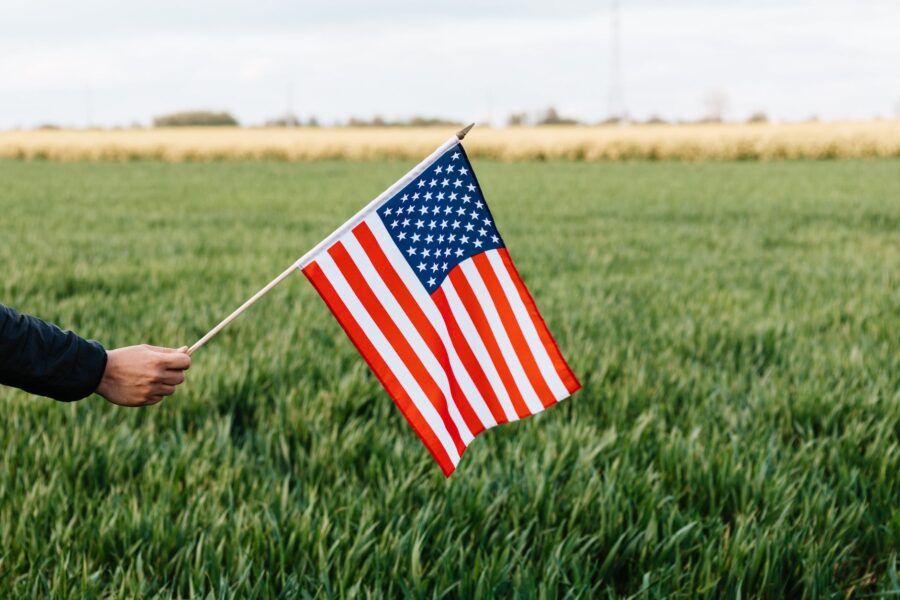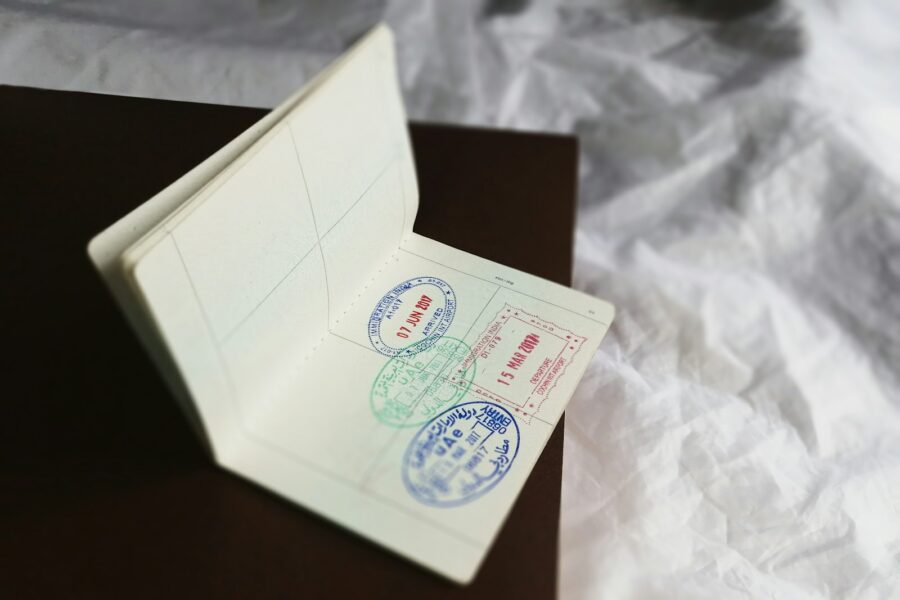What is a Border Crossing Card (BCC)?
In my journey covering essential facets of USA immigration, I’ve come across an indispensable tool for Mexican citizens aiming to visit the US for short durations—The Border Crossing Card (BCC). Intriguing, right? Let’s investigate into what this card really is and why it’s a critical element of USA immigration policies for travelers from Mexico.
Essentially, the BCC is a document granted by the United States Department of State. It simplifies the entry process for Mexicans visiting the US for temporary travel, up to 30 days, within the border zone. What’s remarkable about the BCC is its dual functionality. Not only does it act as a visa when presented alongside a passport, but it also serves as an identity document. For Mexican citizens, obtaining a BCC is a step towards hassle-free travel to the US for shopping, tourism, or business meetings.
To apply for a BCC, individuals must undergo a thorough application process which includes documentation submission and an interview at a US consulate or embassy in Mexico. The criteria for eligibility firmly emphasizes the applicant’s need to demonstrate strong ties to Mexico to ensure their return after their temporary visit to the US.
A salient feature of the BCC is its validity. The card has a 10-year lifespan for adults, while for children under the age of 15, the validity is limited to 5 years. This extended validity period underscores the card’s convenience for frequent travelers, sparing them the ordeal of frequent renewals.
Grasping the fundamentals of the Border Crossing Card has unfurled a new layer of understanding for me about the nuances of immigration and cross-border travel between Mexico and the US. It’s clear how this card amalgamates convenience with security, providing a streamlined path for Mexicans to visit the US while adhering to immigration controls.
Purpose of the BCC
In my extensive exploration of USA immigration, I’ve come to understand the pivotal role the Border Crossing Card (BCC) plays. Primarily, its purpose is multifaceted, serving not only as a travel document but also as a crucial element in the broader immigration framework between the United States and Mexico. Here, I’ll investigate into the key functions and benefits of the BCC, shedding light on its significance for Mexican citizens.
Firstly, the BCC simplifies the entry process for Mexicans traveling to the United States. It’s designed to streamline immigration procedures, making it more accessible for individuals seeking to visit the US for short durations, primarily within the border zone. Given the vast expanse of the US-Mexico border, this facilitation is invaluable, allowing for smoother, more efficient transits.
Also, the BCC doubles as a visa and an identity document. This dual functionality underscores its importance in the immigration world, offering a convenient, all-in-one solution for travelers. By integrating these two essential elements, the BCC significantly reduces the bureaucratic hurdles typically associated with USA immigration processes. It’s a testament to the ongoing efforts to foster bilateral cooperation and ensure managed and safe border crossings.
Another critical aspect of the BCC is its role in enhancing security. Both the United States and Mexico benefit from a system that allows for the efficient monitoring and regulation of cross-border movement. By issuing BCCs, authorities can better manage who enters the US, ensuring that travelers meet the necessary criteria and abide by the regulations governing their stay.
Finally, the BCC is a symbol of longstanding friendship and mutual respect between the two nations. It facilitates not only tourism and family visits but also supports economic interactions, such as shopping and business meetings, within the border zone. This economic interdependence is crucial, highlighting the BCC’s role in fostering cross-border commerce and understanding.
As I navigate the complexities of USA immigration policies, it’s clear that the BCC is more than just a travel document. It’s a key player in the ongoing dialogue between the United States and Mexico, aimed at ensuring a balanced approach to immigration and border management.
Eligibility criteria for the BCC
When delving into the specifics of USA immigration, particularly for those intending to apply for a Border Crossing Card (BCC), understanding the eligibility criteria is crucial. I’ve sifted through the essential information to make it easier for you to navigate through your immigration process.
First and foremost, it’s critical to note that the BCC is exclusively available to Mexican citizens. This means if you’re thinking about immigration to the United States from any other country, the BCC won’t be applicable to your situation. But for Mexicans, it opens up a streamlined pathway to enter the USA, specifically designed to help easier border crossing for various purposes, including tourism and business.
To be eligible for a BCC, applicants must:
- Be a Mexican citizen residing in Mexico.
- Have a valid Mexican passport.
- Prove ties to Mexico that would ensure their return after a temporary visit to the U.S.
- Demonstrate that their intended activities in the U.S. are consistent with BCC regulations, primarily within the border zone.
An important aspect of the BCC application process involves an interview at a U.S. consulate or embassy in Mexico. During this interview, applicants must convince the consular officer of their strong ties to Mexico and the temporary nature of their intended visit to the United States.
Also, background checks are a standard part of the process to ensure the applicant poses no security risk to the U.S. This aspect underscores the dual role of the BCC in facilitating travel while also enhancing border security—a key priority in U.S. immigration policy.
Eligibility also extends to dependents, but each application is assessed individually. This means that while a family might apply together, each member must meet the eligibility criteria on their own merit.
Understanding these criteria is the first step in exploring the complexities of immigration and making informed decisions about your journey to the United States. Whether you’re planning a short visit or envisioning a longer stay within the border zone, the BCC represents a pivotal element in the broader framework of USA immigration policies, designed to uphold security while fostering bilateral cooperation and ease of movement for eligible Mexicans.
Benefits of using the BCC
When exploring the vast world of USA immigration, understanding the tools and documents that can streamline the process is crucial. The Border Crossing Card (BCC) stands out as a beacon of efficiency for those eyeing the United States for their travels or temporary stays. I’ve delved deep into the myriad advantages this card offers, and I’m here to share why it’s a game-changer.
Simplifying Entry
The BCC dramatically simplifies the entry process into the United States for Mexican citizens. It eliminates the need for a visa for short visits, making it a hassle-free option for travel within the border zone. This not only saves time but also reduces paperwork, allowing travelers to focus on the purpose of their visit, whether it’s for tourism, shopping, or visiting family.
Economic and Social Benefits
Economically, the BCC plays a pivotal role in maintaining the vibrant cross-border commerce and social exchange that characterize US-Mexico relations. By facilitating easier cross-border movement, the BCC supports the thriving trade and familial connections that enrich both countries.
- Economic growth: Businesses benefit from the streamlined flow of customers and partners.
- Cultural exchange: Encourages cultural understanding and exchanges between the US and Mexico.
Security and Efficiency
From a security standpoint, the BCC is a testament to the mutual commitment of the US and Mexico to manage their shared border effectively. Each card is equipped with high-tech features that allow for enhanced tracking and verification processes, ensuring that only eligible individuals can cross the border. This focus on security doesn’t come at the expense of efficiency. Thanks to the BCC, border authorities can expedite checks, reducing wait times and making the crossing experience smoother for everyone.
I’ve witnessed firsthand how the BCC enhances the immigration experience, embodying the pillars of efficiency, security, and convenience. It’s a testament to the ongoing commitment between the United States and Mexico to help legal, streamlined cross-border movement. The BCC not only makes life easier for individuals looking to enter the US but also strengthens the economic and social fabric binding these two nations.
How to apply for a BCC
When I started my journey into understanding the intricacies of USA immigration, the Border Crossing Card (BCC) stood out as a streamlined solution for Mexican citizens. Here’s a step-by-step guide on how to apply for one, making your immigration process smoother.
Eligibility
First off, it’s crucial to ensure you meet the eligibility criteria. Applicants must be Mexican citizens intending to travel temporarily to the US for tourism or business purposes. Also, proving ties to Mexico that will ensure your return is a key part of the application.
Application Process
The application process for a BCC involves several straightforward steps:
- Complete Form DS-160: The Online Nonimmigrant Visa Application form is essential. It’s available on the Consular Electronic Application Center website, and it’s important to answer all questions accurately.
- Pay the Application Fee: As of my last check, the fee was $160, but it’s wise to verify the current fee as it can change. Keep the receipt, as you’ll need it for your interview.
- Schedule an Interview: Visa interviews are mandatory for applicants between 14 and 79 years old. You can schedule yours through the U.S. Embassy or Consulate website in Mexico.
- Prepare Your Documentation: Aside from your passport and Form DS-160 confirmation page, bring a photo that meets the requirements, your fee receipt, and any evidence of ties to Mexico.
- Attend Your Interview: During the interview, be prepared to answer questions about your travel plans and ties to Mexico. It’s your chance to show that you intend to return after your visit.
Processing Time
After the interview, if approved, the processing time for a BCC can vary. Most applicants receive their card within a few weeks, but it’s smart to apply well in advance of your planned travel date.
By following these steps, I navigated the immigration process efficiently, making my travel plans to the US much more manageable. The BCC is an excellent tool for Mexican citizens looking to explore the United States, fostering hassle-free border crossings.
Conclusion
Exploring the US immigration process can seem daunting but armed with a Border Crossing Card makes it significantly smoother for Mexican citizens planning short visits. It’s not just about the ease of crossing; it’s about fostering stronger ties and facilitating commerce between neighbors. Having gone through the steps to apply, including understanding the eligibility criteria and gathering the necessary documentation, it’s clear that the BCC stands out for its efficiency. Remember, the key to a successful application lies in demonstrating strong ties to Mexico. With the processing time in mind, planning ahead becomes less of a hassle and more of a straightforward path to ensuring your travels are as smooth as possible. The BCC isn’t just a travel document; it’s a bridge to closer connections and shared opportunities.


Leave a Comment